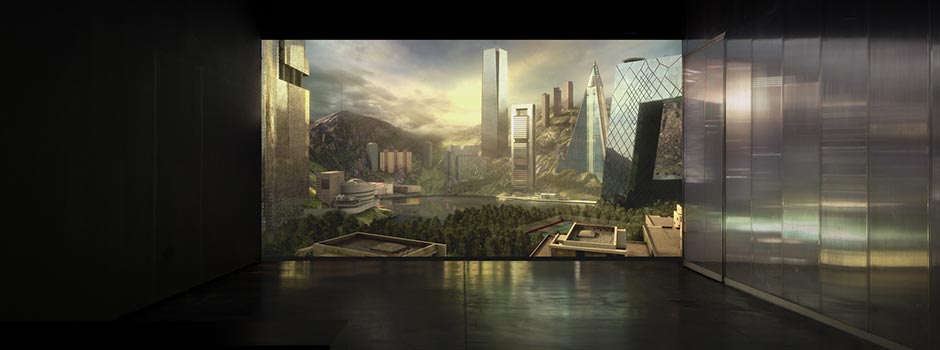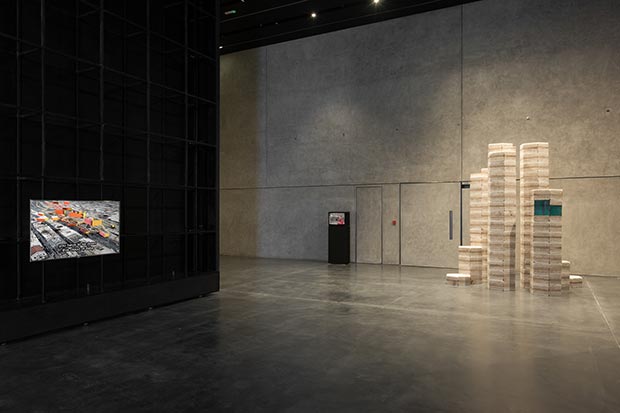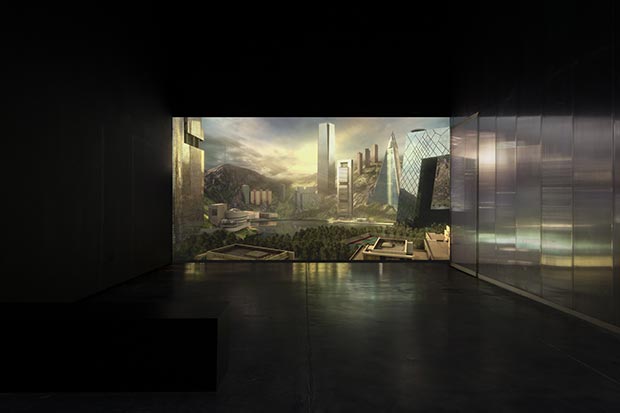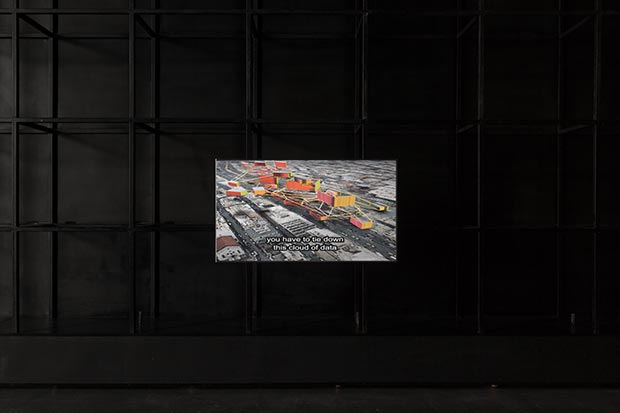
Group exhibition (Nov 7-21, 2018) Adapt to Survive: Notes from the Future opens in Concrete, Alserkal Avenue
Nov 07, 2018 Exhibition

 Adapt to Survive: Notes from the Future, Installation image / Courtesy the artist, Concrete and Hayward Gallery. Credit Ismail Noor
Adapt to Survive: Notes from the Future, Installation image / Courtesy the artist, Concrete and Hayward Gallery. Credit Ismail Noor
Adapt to Survive: Notes from the Future has opened in Concrete, Alserkal Avenue, in collaboration with the Hayward Gallery, London. The exhibition brings together artworks by seven international artists who imagine how our world might look and feel in the future. Engaging with the idea that adaptation is necessary for survival, the artists present films, sculpture, and text-based works that explore ideas of change and hybrid forms of architecture, biology, technology, and language.
Abdelmonem Bin Eisa Alserkal, Founder of Alserkal Avenue and Concrete, said: “Concrete was envisioned as a space to host international, museum-grade exhibitions that support cultural understanding. This collaboration with the Hayward Gallery, London brings to the UAE diverse views of our shared future, creating a foundation for an imperative discourse around sustainability and futurology, subjects that are now central to our rapidly-changing world.â€
In recent decades, futurology has become established as an area of research combining game theory, statistics, and speculation. Responding to these cultural shifts, the artists in Adapt to Survive: Notes from the Future make educated guesses about our society’s evolution and progression, but equally convey uncertainty and scepticism about our accelerating patterns of growth and consumption.
The glitchy monologue spoken by Ann Lislegaard’s computer-animated fox consists of quotes from HG Wells’s Time Machine (1895). This novel—one of the first works of science fiction—is also the first to explore the idea of a vehicle capable of transporting the user through time and space. In Lislegaard’s Time Machine (2011), the fox’s voice and the narrative it attempts to tell appear to be on the edge of breaking down or falling apart, while the creature’s crazed expression suggests that the future is just as flawed as the present.
In Tyrrau Mawr, Bedwyr Williams presents a vision of an imaginary mega-city in rural North Wales. The work takes the form of a high-definition digital matte painting, a technique used in filmmaking to create vast and complex scenic backdrops. In his narrative voice-over, Williams offers a series of vignettes that provide glimpses into ordinary lives led within this new metropolis. Each one captures a sense of post-modern listlessness or malaise.
 Bedwyr Williams, Tyrrau Mawr, 2016. © Bedwyr Williams / Courtesy the artist. Credit Ismail Noor
Bedwyr Williams, Tyrrau Mawr, 2016. © Bedwyr Williams / Courtesy the artist. Credit Ismail Noor
In his sculptural work, Julian Charriere often draws attention to the geological impact of our increasingly digital society. His series Future Fossil Spaces (2017) explores our relationship to the planet’s natural resources—in particular to lithium, which is used in batteries and other electronic components. Here, columns are constructed from layers of salt bricks, giving sculptural form to the spaces left behind after the extraction of lithium from the world’s largest salt flat, the Salar de Uyuni in Bolivia.
Set in the year 2045, Rainer Ganahl’s short film I Hate Karl Marx (2010) presents a young German woman struggling to accept a world in which China is the dominant political and economic power, most countries are communist, and everyone speaks Chinese. Ganahl’s deliberately provocative film seeks to address western xenophobia and forms part of the artist’s ongoing engagement with non-western cultures.
Marguerite Humeau’s work explores contemporary manifestations of ancient myths, including the figure of the sphinx—the half-beast, half-human gatekeeper of ancient Egypt and ancient Greece. Sleek and sinister, Humeau’s sculpture HARRY II is an exploration of modern sphinxes: online security, border control, and surveillance. In this sculpture, anti-climb ‘raptor’ fencing is cast in artificial human skin; plastic vessels hold artificial blood; and a threefaced winged beast—part predator, part crest—emits a low hum reminiscent of a heartbeat, or remote aerial warfare.
Andreas Angelidakis’ The Walking Building is a proposal for the contemporary art museum of the future. Responding to the needs of today’s mobile, digitally-connected artists, this "hybrid hyper-building" is a shape-shifting structure that adapts to different environments and needs. In this video, the museum comes alive, crawling like an animal through the streets of Athens. The work is inspired by Archigram, an avant-garde architectural collective who championed radical, adaptable urban structures such as The Walking City (1964), and three of whose founding members were involved in the design of the Hayward Gallery.
 Andreas Angelidakis, The Walking Building, 2004-2006. Video animation, color, sound duration 5 min. © Andreas Angelidakis / Courtesy The Breeder, Athens. Credit Ismail Noor
Andreas Angelidakis, The Walking Building, 2004-2006. Video animation, color, sound duration 5 min. © Andreas Angelidakis / Courtesy The Breeder, Athens. Credit Ismail Noor
The Butterfly Already Exists in the Caterpillar is part of artist and writer Youmna Chlala’s ongoing project The Museum of Future Memories. Through a combination of text and image, Chlala evokes a city in flux: a place of rising sea levels, where seasons have ceased to exist and the remaining inhabitants have forged new ways to live.
Dr Cliff Lauson, Senior Curator, Hayward Gallery said: “We are delighted to be collaborating with Concrete in Alserkal Avenue for the first time, on an exhibition that takes a timely and imaginative look at the future of our civilisation. It is also Hayward Gallery’s first project space exhibition to tour internationally and we are thrilled that this show will be seen by a global audience in a remarkable new space, and in a city that is constantly looking the future.â€
“We work to create a springboard for cultural exchange, working with the world’s leading arts institutions. Hayward Gallery has a rich history of promoting and supporting contemporary art, featuring landmark exhibitions by significant artists. Adapt to Survive: Notes from the Future brings seven significant contemporary artists from diverse backgrounds to the UAE, showcasing a wide range of compelling multimedia pieces that challenge our views about what the future will hold,†said Vilma Jurkute, Director, Alserkal Avenue.
Adapt to Survive: Notes from the Future is curated by Dr Cliff Lauson, Senior Curator, Hayward Gallery. Adapt to Survive: Notes from the Future was on show at the HENI Project Space, Hayward Gallery, London from 18 April – 11 June, 2018. Supported by a public programme in Concrete, Alserkal Avenue, Dubai, the exhibition is curated by the Hayward Gallery, London, in collaboration with Concrete, Dubai.
Comments
Add a comment